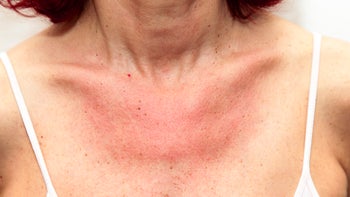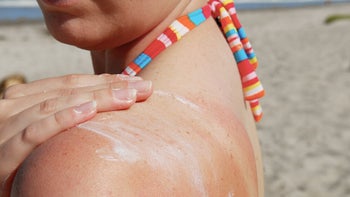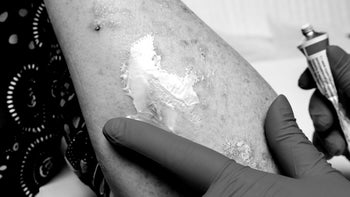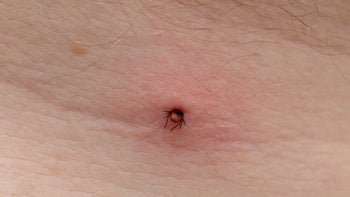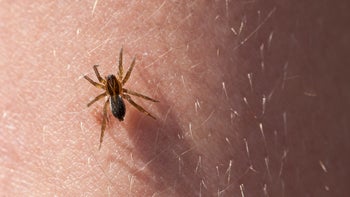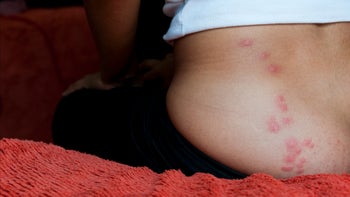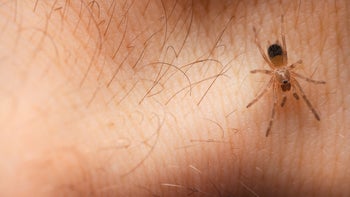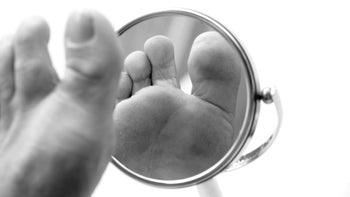
How to Fix Ingrown Fingernails and Toenails: Home Treatment and Pictures
Key takeaways:
Ingrown nails are a common condition that can be quite painful. They can be the result of tight-fitting shoes, improper nail care, or repeated trauma.
If an ingrown nail is caught early, conservative treatment is possible. If it’s very painful or infected, contact a healthcare professional for help.
Many types of treatments are available for ingrown fingernails and toenails. The best treatment for you depends on the severity and any risk factors you may have for infection.
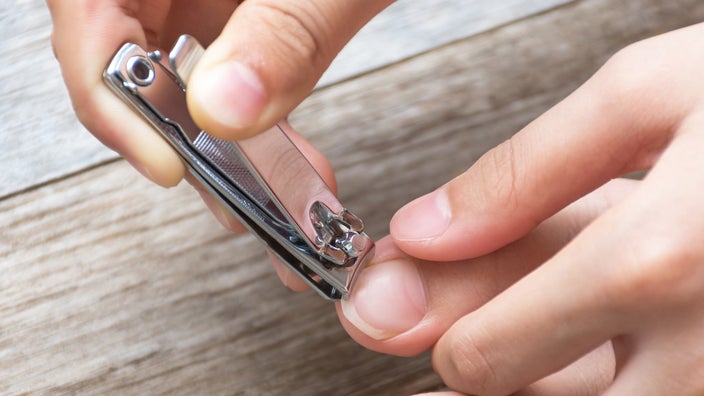
An ingrown nail is a relatively common condition. It’s thought to affect up to 5% of people in the general population and up to about 30% of people with diabetes. But experts believe that these figures may be underestimated, since minor cases likely often go unreported.
Any fingernail or toenail has the potential to become ingrown. But this most commonly happens to the big toe. If it’s caught early, the treatment for an ingrown fingernail or toenail can be simple, and the duration of your symptoms can be short.
Learn what causes ingrown nails and how to fix, remove, or treat them before they become an issue.
Search and compare options
What causes an ingrown nail?
An ingrown nail occurs when the side of your nail grows into the soft support tissue of your toe or finger. This leads to inflammation and pain.
There are several reasons why ingrown nails happen, including:
Improper nail trimming: This is a common reason for developing ingrown nails. Cutting the nail too short or at an improper angle increases the risk of a nail becoming ingrown as it regrows.
Wearing tight or ill-fitting shoes: Tight shoes can cause increased pressure on the nail. This can cause nail fragments to grow deep into the skin. It also increases the risk of recurrence.
Repeated trauma to the toenail: Ingrown nails can happen with certain athletic activities, especially those that involve running or kicking.
Excessive sweating: Heavy sweating can cause moist skin and nails. Softer nails may split more often and grow into the skin.
Overly curved toenails: This is uncommon, but misshapen nails can cause repeated ingrown toenails.
Genetics: A condition causing deformed fingers or toes can also lead to ingrown nails.
Photos of ingrown fingernails and toenails
Here are some pictures to help you know what an ingrown toenail looks like.
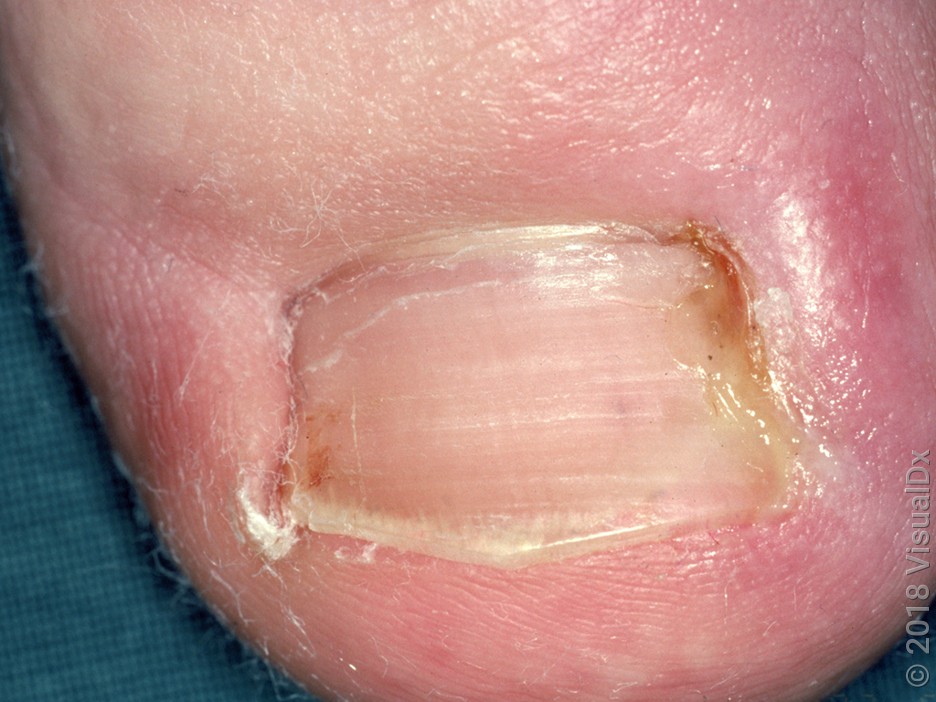
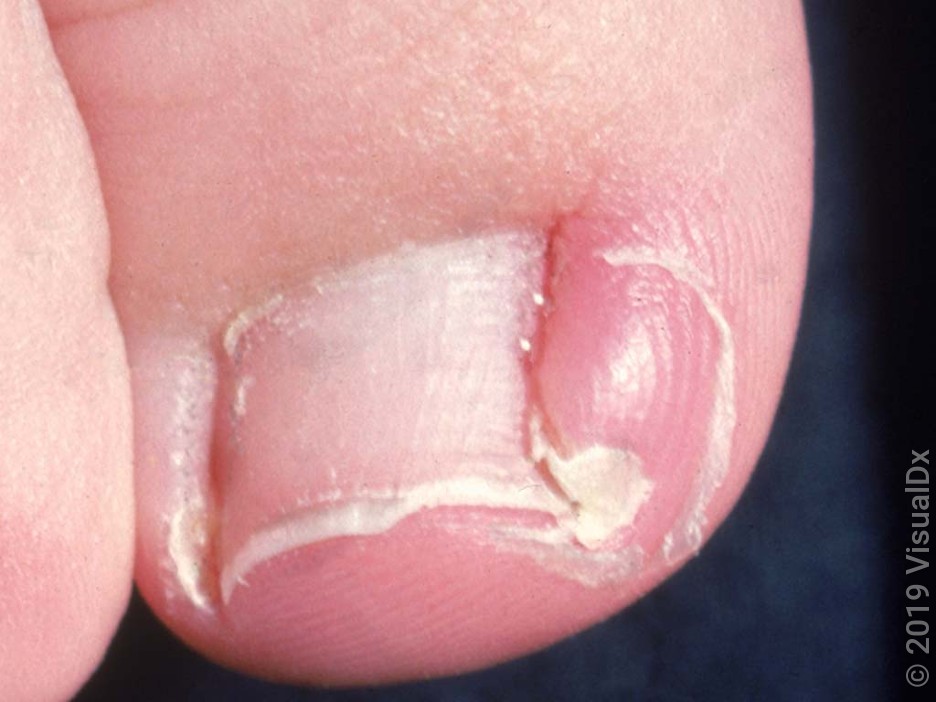
What are the signs and symptoms of an ingrown nail?
The most common sign of an ingrown nail is pain where the nail meets the skin. This pain may be mild at first. But, if the ingrown nail progresses, it can become quite debilitating. In some cases, pain from an ingrown nail can be so severe that it becomes difficult to walk or wear shoes comfortably.
Other common signs of an ingrown nail are:
Swollen, painful, red skin around the edges of the nail
An open sore at the site of toenail pain
Pus or leaking fluid
Ingrown nail complications: Here’s how to spot a nail bed infection (with pictures) and when you should seek treatment.
Hangnail treatment: Learn more about how to get rid of painful hangnails and prevent them from forming.
Are your medications affecting your nails? Find out which medications can cause nail changes and what you should do.
Infected ingrown nails
Sometimes, an ingrown nail can lead to an infection of the skin around the nail, or paronychia. Redness or pus around the nail are early signs of paronychia.
If caught early, an infected ingrown nail can be easily treated with warm water soaks 2 to 3 times per day. Left untreated, it can lead to a serious infection of the skin and even of the underlying bone.
Signs of a serious case of ingrown nail infection can include:
Feeling unwell
Fever or chills
Red streaking of the skin
Body aches
Read more like this
Explore these related articles, suggested for readers like you.
An ingrown fingernail or toenail infection that hasn't responded to warm soaks may need treatment with antibiotics. And, in some cases, the surrounding skin may need to be cut and drained, if a collection of pus has formed.
How do I fix ingrown fingernails and toenails?
The treatment for ingrown nails depends on the severity of inflammation and if they’re a recurrent problem. Let’s review the most common ways to treat ingrown nails
Home remedies and self-care
An ingrown fingernail or toenail should only be treated at home if it’s caught early in the process and the pain is tolerable.
This approach includes soaking the nail in warm, soapy water for 20 minutes twice a day. This helps to soften the nail and makes it easier to treat.
And here are some additional steps you can follow to treat your ingrown nail at home:
Cotton wicks: If the edge of the nail can be easily lifted, you can place a small wad of cotton under it. This will help to lift the nail off the skin, so it can grow outwardly.
Warm soaks: Soaking a sore ingrown nail can help with pain and inflammation. It can also help with softening the skin around the nail to ease in lifting the nail.
Topical antibiotics: Add an over-the-counter (OTC) antibiotic cream to prevent local infection.
Protective wrap: Cover the nail with a protective bandage. This will help with comfort and will also help to keep the site clean. But be sure to change the bandages every day.
Roomy shoes or sandals: This decreases the risk of any additional pressure on the nail. It will be more comfortable and improves the chances that your ingrown nail will resolve.
Pain management: You may need to use OTC pain relievers such as ibuprofen or acetaminophen. If this doesn’t help the pain, your ingrown nail may be too advanced for you to care for it without the help of a healthcare professional.
Proper nail care: Toenails should be cut straight across the top of the nail. There should not be an angular cut or shape. People with difficulty reaching their toenails should have someone else trim them.
If there are signs of infection or you’re in severe pain, be sure to notify a healthcare professional.
Surgery
Nail removal is a common treatment for ingrown nails. It’s an in-office procedure using local anesthesia. Many times, it’s a partial removal. But, in severe cases, a healthcare professional may need to remove the entire nail.
The tissue underneath the nail is very sensitive. So, total nail removal is reserved for more advanced cases, as it can involve a more painful recovery.
In a partial removal, just the side of the nail that has grown inward is removed, in an attempt to leave as much of the nail intact as possible.
After the nail is removed, it’ll typically regrow in 6 to 12 months.
Chemical treatment
In addition to removing the nail, a healthcare professional may apply a chemical to the nail matrix. (The nail matrix is at the base of the nail where it begins to grow.) This process is called a chemical matrixectomy. It prevents regrowth of the nail, which may be preferable for those who repeatedly have ingrown nails.
Chemicals often used during this process include:
Phenol
Sodium hydroxide
Trichloroacetic acid
Along with preventing regrowth of the nail, chemical treatment may lead to less pain after the surgery. But it can also lead to a prolonged healing time due to excessive destruction of the tissues surrounding the nail.
Ablation
Ablation can be an alternative to chemical matrixectomy. This uses non-chemical methods to destroy the base of the nail. Some of the options for ablation include:
Electrocautery
Cryotherapy
Radiofrequency ablation
Carbon dioxide laser ablation
What happens if I don’t treat an ingrown nail?
The course of your ingrown nail depends on its severity. It’s possible that a mild ingrown nail will grow out on its own. And you may be able to avoid extensive treatment or procedures.
One small study showed that early ingrown toenails can be conservatively treated with success. The treatment included warm soaks, topical antibiotics, and proper nail hygiene and trimming. Of 162 people treated this way, only 5 had a recurrence after 6 months.
But, if your ingrown nail is severe, leaving it untreated will lead to more pain and complications. Untreated ingrown nails can be worrisome if you have underlying medical conditions.
Untreated ingrown nail complications
If you have a condition or take medication that affects your immune system and your ability to fight infection, you may have worse outcomes with ingrown nails. These conditions and medications include:
Poor circulation in the legs and feet can also make an ingrown nail more serious. When the risk of complications is high, early medical treatment is highly recommended.
Complications from an untreated ingrown toenail can include:
Cellulitis (infection of the surrounding skin)
Osteomyelitis (infection of the bone)
Skin ulcers
These complications require immediate medical attention. In severe cases, surgical intervention may be necessary.
How to prevent ingrown nails
Preventing ingrown nails involves proper foot and nail care. Some tips you can follow to prevent ingrown nails include:
Cut the nails straight across, rather than at an angle.
Avoid trimming the nails too short.
Avoid wearing shoes that are too small or uncomfortable.
If you participate in sports activities with a lot of running, consider increasing the shoe size for roominess.
Keep your feet and toes clean and dry.
Frequently asked questions
A mild ingrown nail can be cut straight across once it has grown out long enough to be trimmed. Don’t try to dig out or cut the ingrown portion with scissors. You may have to treat the nail for several days before it’s long enough to cut. This includes daily foot soaks (to soften the nail) followed by a cotton piece under the nail (to lift the nail).
For a more serious ingrown nail, it’s best to seek medical treatment rather than trying to trim it by yourself.
Here are some situations when you should get medical attention for ingrown nails:
Treatment at home isn’t working.
You’re in significant pain or discomfort.
You have signs of an infection (like draining pus, spreading redness or discoloration, or fever).
You have diabetes or another condition that affects your immune system or circulation.
The treatment for ingrown nails is successful for the most part. Recurrence rates vary depending on the treatment method used. In general, nail removal combined with chemical matrixectomy has greater success than nail removal alone. That’s because the nail is less likely to regrow. With nail removal alone, the recurrence rates are much higher.
The bottom line
Many people experience an ingrown nail at some point in their lifetime. Although painful and inconvenient, ingrown nails are easily treated when caught early. In many cases, they can be treated at home. Simple changes like avoiding tight shoes and trimming the nails properly go a long way in preventing ingrown nails. But if you’re at risk for complications or your ingrown nail won’t go away, make sure you see a healthcare professional for treatment.
Why trust our experts?


Images used with permission from VisualDx (www.visualdx.com).
References
Brahs, A. B., et al. (2023). Histology, nail. StatPearls.
Chabchoub, I. (2022). Ingrown toenails. StatPearls
Geizhals, S., et al. (2019). Review of onychocryptosis: Epidemiology, pathogenesis, risk factors, diagnosis and treatment. Dermatology Online Journal.
Gera, S. K., et al. (2019). Ingrowing toenails in children and adolescents: Is nail avulsion superior to nonoperative treatment? Singapore Medical Journal.
Heidelbaugh, J. J., et al. (2009). Management of the ingrown toenail. American Family Physician.
Mayeaux, E. J., et al. (2019). Ingrown toenail management. American Family Physician.
MedlinePlus. (2023). Paronychia.
Muriel-Sánchez, J. M., et al. (2020). The treatment of ingrown nail: Chemical matricectomy with phenol versus aesthetic reconstruction. A single blinded randomized clinical trial. Journal of Clinical Medicine.
Myhealth.Alberta.ca. (2023). Ingrown toenail: Care instructions.
National Health Service. (2022). Ingrown toenail.
NHS Inform. (2024). Ingrown toenail. National Health Service.












